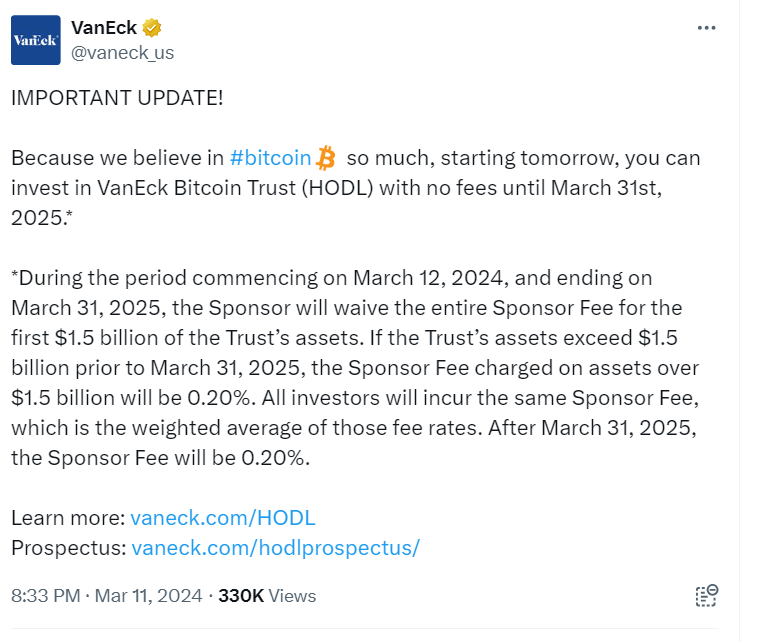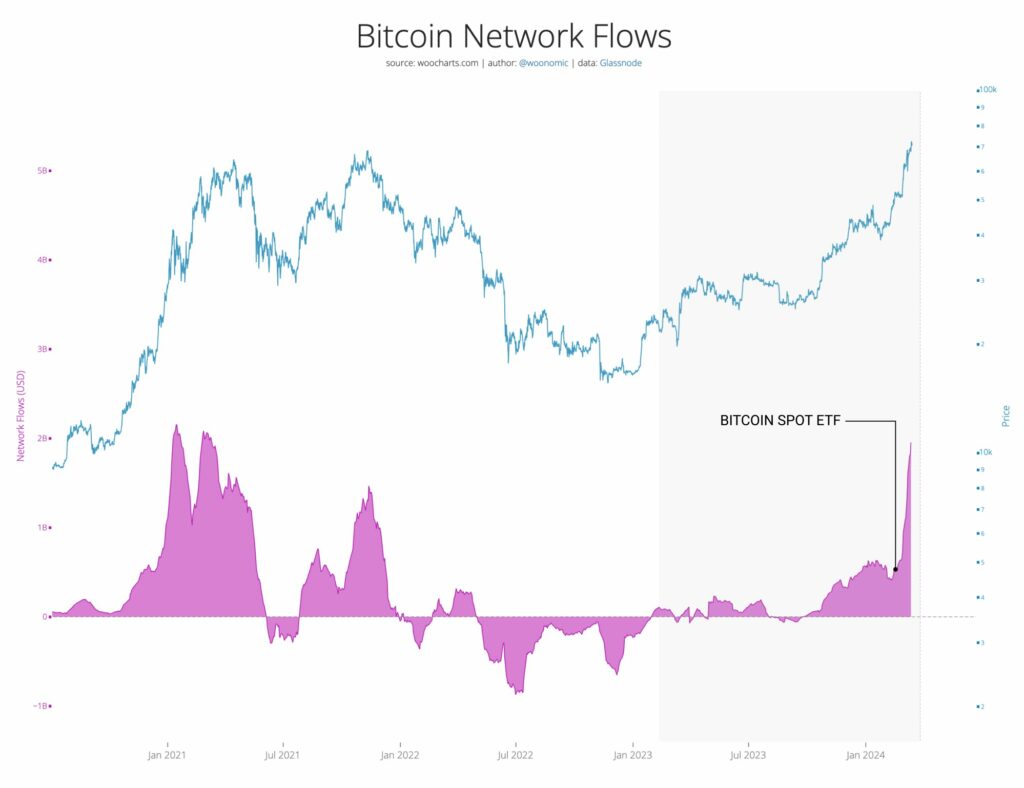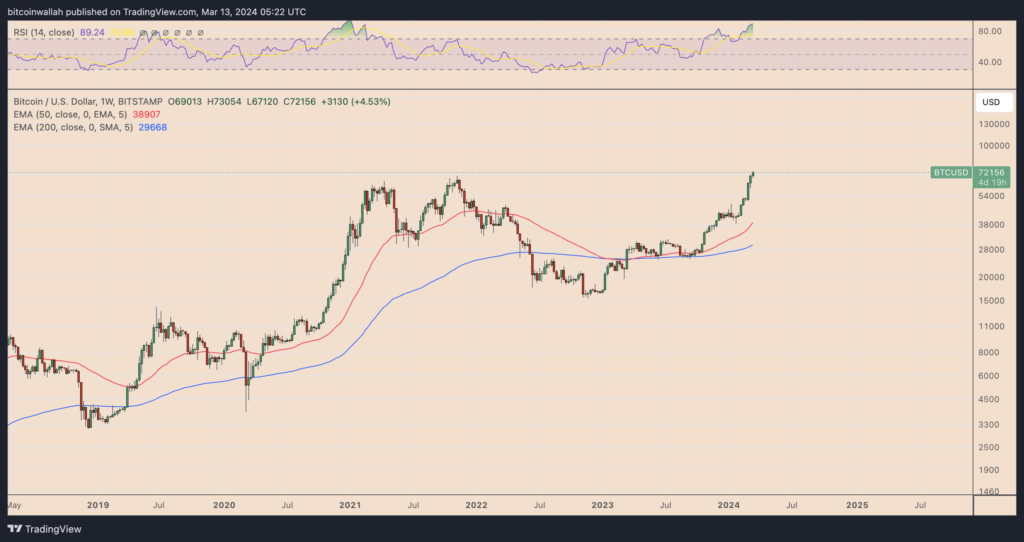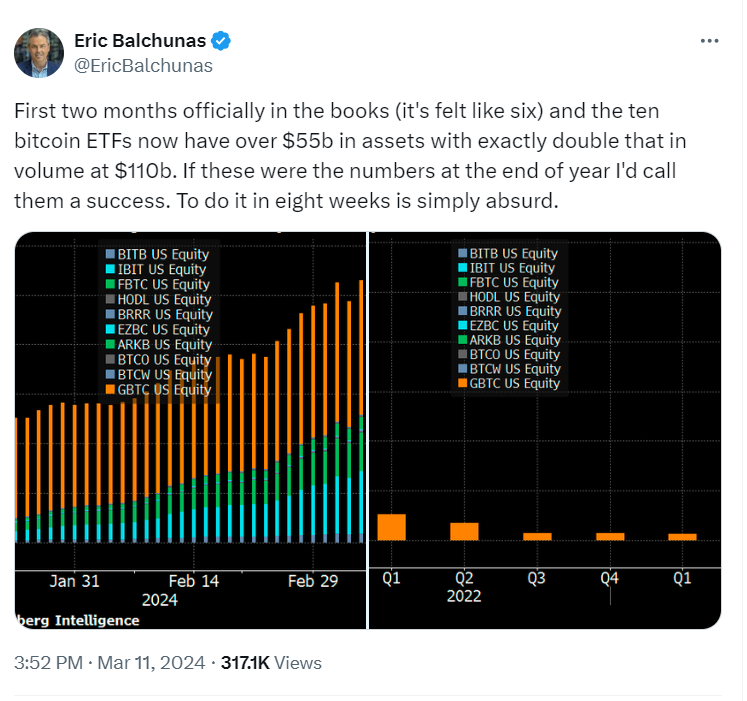YEREVAN (CoinChapter.com) — VanEck made its HODL Bitcoin ETF free to invest in, hoping to attract more money until March 2025 or until it hits $1.5 billion in assets. Yet, with only a bit more than $305 million gathered, it’s far behind others. This situation makes us wonder: Why isn’t VanEck’s big move to cut fees making them more money like their competitors? Let’s dive into what’s going on and see why this strategy might not be working as expected.
VanEck Drops Fees to Zero on Bitcoin ETF to Encourage Investors
VanEck, a big company that manages money, is making it cheaper to invest in its Bitcoin ETF called HODL. They have cut the fees to zero until March 31, 2025 or unless it gathers more than $1.5 billion. Once that happens, VanEck will start charging a fee of 0.20%.
Before this change, HODL’s fee was 0.2%, which was already lower than what most other companies charge. For example, big names like BlackRock, Fidelity, and others charge 0.25%. Only Franklin Templeton charges a bit less, at 0.19%.
VanEck decided to drop these fees because they really “believe in Bitcoin.” They hope this will encourage more people to invest in HODLs to gain exposure to cryptocurrency.

The U.S. government’s SEC approved HODL on Jan. 4. Right now, it has $297.86 million in it, which includes 4,299 Bitcoins. Since it started, HODL has made an 87.7% return on investment by following Bitcoin’s price.
VanEck Drops Fees to Grow Its Bitcoin Fund
VanEck has removed all fees from its Bitcoin ETF, HODL, because it believes in Bitcoin a lot. But it also looks like they want to grow their AUM—the total value of their Bitcoin investments. VanEck’s HODL AUM is just over $305 million now. This is small when you compare it to BlackRock’s Bitcoin Fund, which has a huge AUM of $13.5 billion.
Other companies like Fidelity, Ark Invest, and Bitwise have also grown their AUM to more than $1 billion. On the other hand, Grayscale is not doing as well because its higher fees of 1.5% have led its AUM to fall to $28.5 billion.

Bitcoin ETFs have been a hit, with ten new ones starting in two months and now having over $55 billion AUM combined. So, cutting fees might be VanEck’s way to catch up with these successful funds.
Bitcoin’s Record High
Bitcoin’s price has soared recently, and a lot of this is because new US Bitcoin ETFs are doing really well. After the UK said yes to special Bitcoin products for professional investors, the price jumped to a new high of $72,850.

At the same time, in the US, ETF managers started to compete by lowering their fees. Grayscale used to charge a big fee of 2% every year. Now, most ETFs charge less than 0.30%.
Eric Balchunas from Bloomberg reported that ten US Bitcoin ETFs have hit $55 billion in total assets and $110 billion in trading. He said getting this big in just two months is amazing. But he also said to keep our expectations in check; they’re big, but not as big as the gold market or other main investment areas.

So, Why is VanEck’s Bitcoin ETF Not Making Big Money?
- Tough Competition: VanEck’s Bitcoin ETF, HODL, is fighting a hard battle. Big companies like BlackRock and Fidelity have already taken a lot of the market with their huge Bitcoin funds. VanEck’s fund has some catching up to do with its $305 million in assets.
- Bad Timing: VanEck launched HODL when many other Bitcoin funds were starting, too. This made it harder for them to stand out and attract investors.
- More Than Just Fees: Cutting fees to zero is great, but investors look at other things too. They want a fund that has been around for a while, has done well, and comes from a trusted company. HODL is new and still has to prove itself.
- Bitcoin’s Wild Ride: Bitcoin’s price fluctuates greatly. If it drops or people start to doubt cryptocurrencies, fewer people might want to invest in Bitcoin ETFs like HODL.
- Sticking It Out: Even though VanEck’s no-fee offer is a bold move, it might not be enough all by itself. But if VanEck keeps coming up with new ideas and listens to what investors want, they might start to see more success.
ETFs are cool, but they don’t let you actually own your Bitcoin. Try spot trading at crypto exchanges like BInance to gain complete access to your first cryptos.
The post Why The Hell VanEck is Not Making Money From Its Bitcoin ETF? appeared first on CoinChapter.







